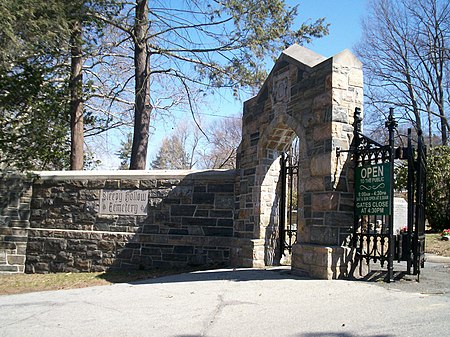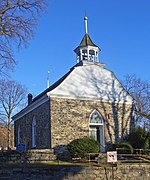Sleepy Hollow Cemetery
1849 establishments in New York (state)American Revolutionary War sitesBuildings and structures completed in 1849Cemeteries in Westchester County, New YorkCemeteries on the National Register of Historic Places in New York (state) ... and 9 more
Dark ShadowsHistoric districts in Westchester County, New YorkHistoric districts on the National Register of Historic Places in New York (state)Monuments and memorials in New York (state)Mount Pleasant, New YorkNRHP infobox with nocatNational Register of Historic Places in Westchester County, New YorkSleepy Hollow CemeteryU.S. Route 9

Sleepy Hollow Cemetery in Sleepy Hollow, New York, is the final resting place of numerous famous figures, including Washington Irving, whose 1820 short story "The Legend of Sleepy Hollow" is set in the adjacent burying ground at the Old Dutch Church of Sleepy Hollow. Incorporated in 1849 as Tarrytown Cemetery, the site posthumously honored Irving's request that it change its name to Sleepy Hollow Cemetery. It was listed on the National Register of Historic Places in 2009.
Excerpt from the Wikipedia article Sleepy Hollow Cemetery (License: CC BY-SA 3.0, Authors, Images).Sleepy Hollow Cemetery
Sylvan Road,
Geographical coordinates (GPS) Address Nearby Places Show on map
Geographical coordinates (GPS)
| Latitude | Longitude |
|---|---|
| N 41.0966218 ° | E -73.8614183 ° |
Address
Sylvan Road
Sylvan Road
10591
New York, United States
Open on Google Maps







